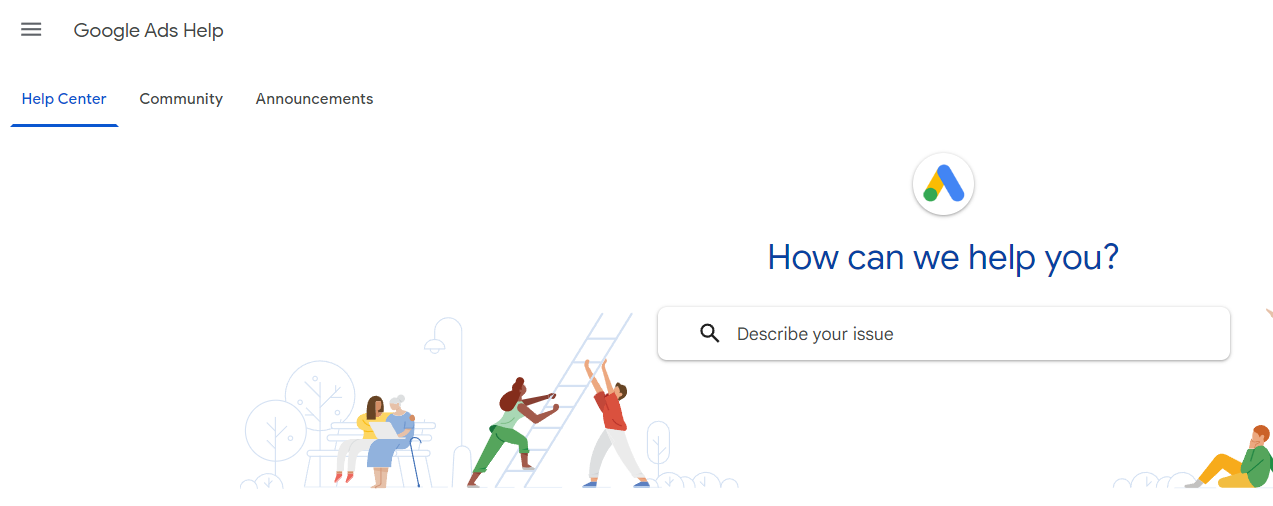December 14, 2024
Google Ads Help: Understanding Keyword Search Advertising

Greg Kopyltsov
Founder
keyword search advertising


In the vast digital landscape of Google Ads, keywords reign supreme. They are the linchpin connecting your offerings with potential customers actively searching for products or services like yours. Effective keyword research is the compass guiding your Google Ads campaigns, allowing you to target the right audience and maximize your return on investment. This comprehensive guide will explore the essentials of keyword search advertising, from understanding the fundamentals to mastering advanced techniques, empowering you to harness the full potential of Google Ads.

Before diving into the intricacies, let's establish a clear understanding of keyword search advertising. It's a form of digital marketing on search engines like Google, where businesses bid on keywords that users might enter when searching for information, products, or services. When a user searches using one of your chosen keywords, your ad has the potential to appear among the search results.
The beauty of this system is its targeted nature. Unlike traditional advertising methods that cast a wide net, keyword search advertising enables you to connect with users actively expressing interest in what you offer. Google Ads provides powerful tools like the Keyword Planner to aid in discovering relevant keywords, analyzing their search volume, and estimating costs. Plus, you have the flexibility to choose from various keyword match types, including "broad match," "phrase match," and "exact match," giving you granular control over which search queries trigger your ads.
Imagine this: someone searches on Google for "comfortable running shoes for women." If you sell running shoes, you'd want your ad to appear in front of them. That's where relevant keywords enter the picture. By selecting keywords that align with your products or services, you increase the likelihood of attracting potential customers actively seeking what you provide.
However, choosing any keyword won't suffice. Google Ads employs a metric called Quality Score to assess the relevance and usefulness of your ads and keywords to searchers. A higher Quality Score signals to Google that your ad is valuable and deserves a prominent position, often at a lower cost-per-click. Conversely, irrelevant keywords can lower your Quality Score, making your ads less visible and potentially more expensive.
Therefore, selecting highly relevant keywords is paramount to reaching the right audience, improving your Quality Score, and ultimately maximizing your advertising budget. It's a strategic balance between casting a wide enough net to capture relevant searches while remaining laser-focused to avoid wasting clicks on unqualified leads.
While keywords are what you select, search terms are what people actually type into the Google search bar. Understanding the difference is crucial for refining your targeting and optimizing your campaigns. For example, you might bid on the exact match keyword "leather handbags," but your ad could be triggered by various search queries like "buy leather handbags online," "best leather handbags for travel," or "designer leather handbags sale."
Analyzing the search terms that trigger your ads provides invaluable insights into your target audience's behavior and preferences. Are they looking for specific types of products? Are they using certain words or phrases that suggest a higher purchase intent? By paying close attention to these nuances, you can adapt your keyword strategy, ad copy, and even your landing pages to better resonate with your audience.
Remember, Google Ads is an evolving ecosystem, and user behavior constantly shifts. Staying attuned to the search terms driving traffic to your site keeps you ahead of the curve and ensures your campaigns remain relevant and effective.

Developing a well-defined keyword strategy is the bedrock of a successful Google Ads campaign. It's not just about choosing any keywords but selecting those that align perfectly with your business objectives and target audience. A strategic approach involves a blend of understanding your target market, conducting thorough keyword research, and organizing those keywords into campaigns and ad groups.
Remember, a successful keyword strategy is dynamic and ever-evolving. Analyzing performance data and incorporating insights from search term reports are essential for refining your approach and achieving optimal results.
With a solid understanding of your target audience and Google Ads fundamentals, the journey into crafting effective keyword strategies begins with selecting the right keywords. These are the terms people use when searching for products or services like yours. But how do you uncover those golden nuggets? The answer lies in thorough keyword research.
Fortunately, Google offers a powerful, free tool: the Keyword Planner. This helpful tool allows you to enter relevant terms related to your business and receive a treasure trove of keyword ideas, along with their search volume, competition level, and even estimated cost-per-click. Additionally, several third-party keyword research tools provide even deeper insights and competitive analysis.
Don't limit yourself to a single tool. Instead, combine data from various sources, explore related searches Google suggests, and analyze competitor keywords. Remember, the goal is to compile a list of highly relevant keywords that accurately reflect what your target audience searches for, setting the stage for well-targeted and effective Google Ads campaigns.
While it's tempting to focus solely on popular keywords with high search volume, incorporating long-tail keywords can be a game-changer. These are longer, more specific phrases that typically have lower search volume but often signify a higher purchase intent. For instance, instead of targeting the broad term "shoes," a long-tail keyword could be "men's brown leather hiking boots size 11."
Long-tail keywords might seem less appealing due to lower individual search volumes. However, they offer a significant advantage: higher conversion rates. This is because users searching for such specific terms are often further along in the buying cycle and more likely to make a purchase.
To effectively incorporate long-tail keywords, create separate ad groups within your campaigns. This allows you to tailor your ad copy and landing pages specifically to these highly targeted searches, ensuring maximum relevance and driving better results.
Once your campaigns are up and running, the real optimization work begins. Google Ads provides powerful reporting tools that offer invaluable insights into your campaigns' performance, helping you fine-tune your approach and maximize your ROI.
Among these tools, the Keyword and Search Term Reports stand out as indispensable assets. They unveil the actual search terms users enter on Google that trigger your ads, providing a goldmine of data to inform your optimization strategies.
The Search Terms Report is a treasure trove of information, revealing the actual search queries that lead users to your ads. By carefully analyzing this data, you gain a deep understanding of your target audience's search behavior and refine your ad strategies accordingly.
For instance, you might discover that certain keywords are triggering irrelevant searches, leading to wasted clicks and ad spend. Armed with this information, you can add those irrelevant terms as negative keywords, ensuring your ads are only shown to users genuinely interested in what you offer.
Consider the following table showcasing how the Search Terms Report can guide your optimization process:
Search Term
Keyword Triggered
Action
best waterproof hiking shoes for men
hiking shoes
No action needed. The search term is relevant.
hiking boots for women on sale
hiking shoes
Consider adding "hiking boots" as a new keyword.
best hiking trails near me
hiking shoes
Add "hiking trails" as a negative keyword to avoid irrelevant traffic.
Optimizing your keyword list is a continuous process. As you gather more data from your campaigns, regularly review and adjust your keyword list based on performance. Don't be afraid to pause or remove keywords that aren't delivering results and allocate more budget toward top performers.
Another effective strategy is to identify keywords with high conversion rates and expand on those themes. Look for related terms, long-tail variations, or even new ad groups to target those high-converting searches more effectively.
Remember, a dynamic keyword list that adapts to user behavior and search trends is vital for maximizing your advertising ROI and achieving your campaign objectives.
Mastering the fundamentals of keyword research, match types, and reporting lays a strong foundation for success. However, taking your campaigns to the next level often requires delving into advanced optimization techniques. These techniques provide even greater control over your targeting, allowing you to refine your audience, maximize ad spend, and drive exceptional results.
From harnessing the power of negative keywords to expertly navigating various keyword match types, this section will equip you with the knowledge to elevate your Google Ads campaigns and stay ahead of the competition.
Imagine this: you're a luxury watch retailer bidding on keywords like "men's watches." While a relevant term, your ads might appear for searches like "cheap men's watches," attracting an audience outside your target demographic and wasting your budget. This is where negative keywords come into play.
Negative keywords are a powerful weapon in your Google Ads arsenal. They allow you to exclude irrelevant searches and ensure your ads appear only in front of the right audience. By adding terms like "cheap," "discount," or "used" as negative keywords, you can filter out price-sensitive searchers and focus on attracting those seeking premium timepieces.
Effectively utilizing negative keywords not only improves campaign efficiency but also enhances your Quality Score by aligning your ads with more relevant searches, potentially lowering your cost-per-click and improving your ad rank.
Keyword match types dictate how closely a user's search query must match your chosen keywords for your ads to appear. There are several match types, each offering a different level of control:
Choosing the right match type is crucial for balancing reach and relevance. Broad match casts a wider net, while exact match provides laser focus. Understanding the nuances of each type allows you to fine-tune your targeting and maximize your campaigns' effectiveness.
KeywordSearch has an AI Audience builder that helps you create the best ad audiences for YouTube & Google ads in seconds. In a just a few clicks, our AI algorithm analyzes your business, audience data, uncovers hidden patterns, and identifies the most relevant and high-performing audiences for your Google & YouTube Ad campaigns.
You can also use KeywordSearch to Discover the Best Keywords to rank your YouTube Videos, Websites with SEO & Even Discover Keywords for Google & YouTube Ads.
If you’re looking to SuperCharge Your Ad Audiences with AI - Sign up for KeywordSearch.com for a 5 Day Free Trial Today!
In conclusion, understanding the intricacies of keyword search advertising is crucial for a successful Google Ads campaign. By selecting the right keywords, incorporating long-tail variations, and leveraging Google's reports to refine strategies, you can optimize ad performance and target the right audience effectively. Additionally, utilizing negative keywords and various matching options can further enhance campaign efficiency. Stay updated with search term reports and performance data to continuously refine and improve your keyword list for better results in your Google Ads campaigns. Mastering these strategies will help you drive more relevant traffic and maximize your advertising ROI.